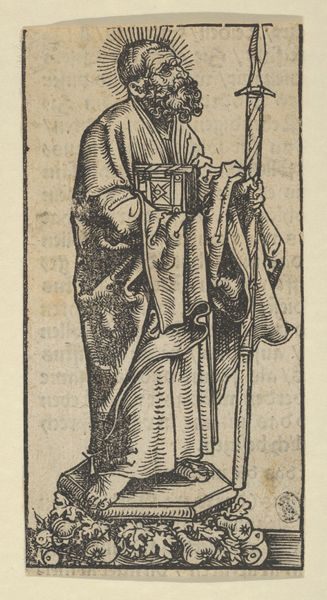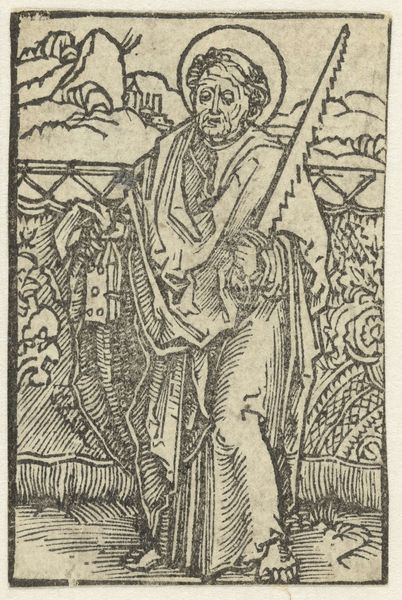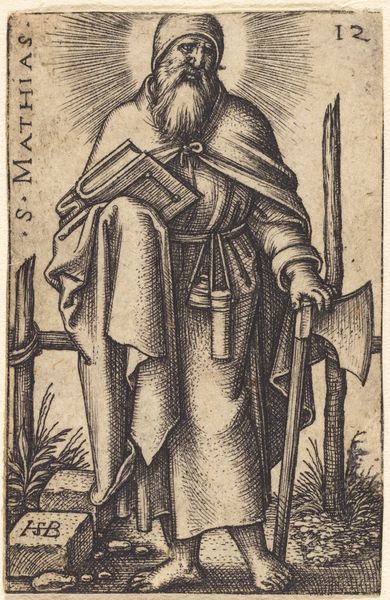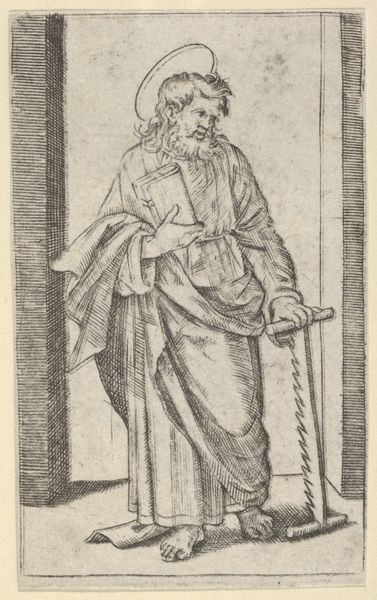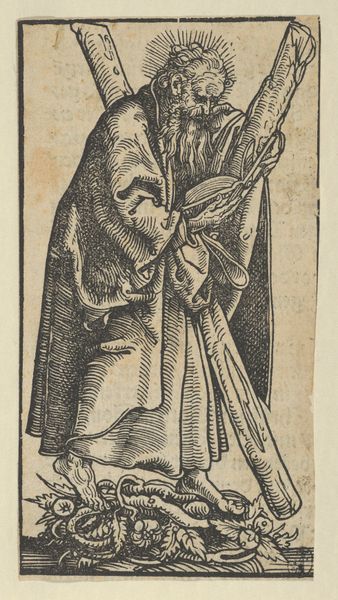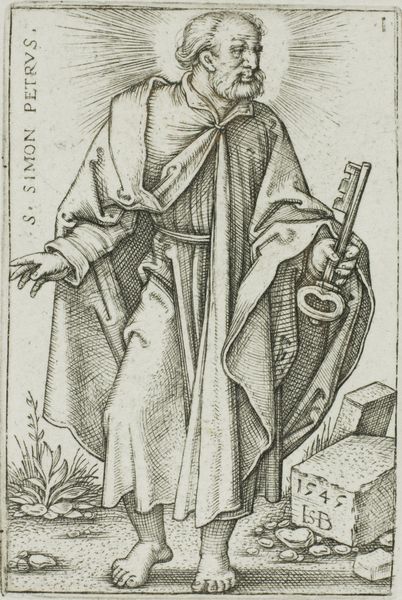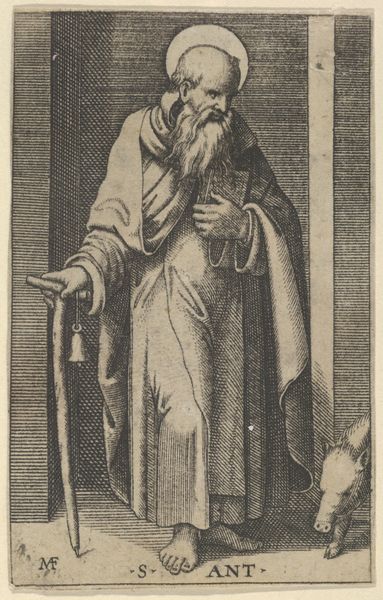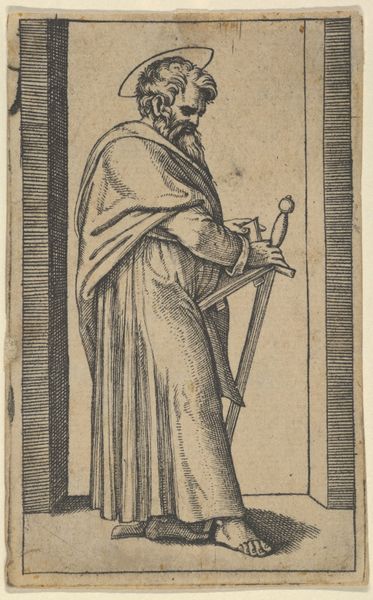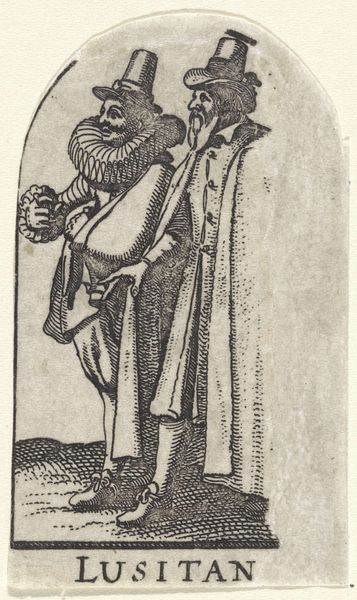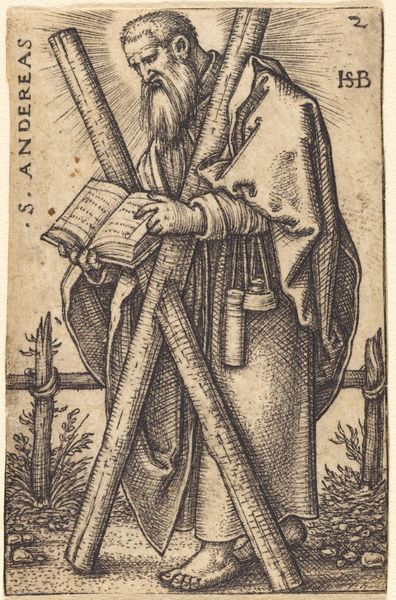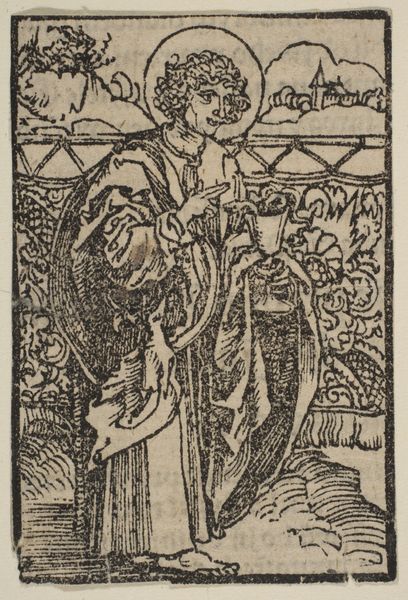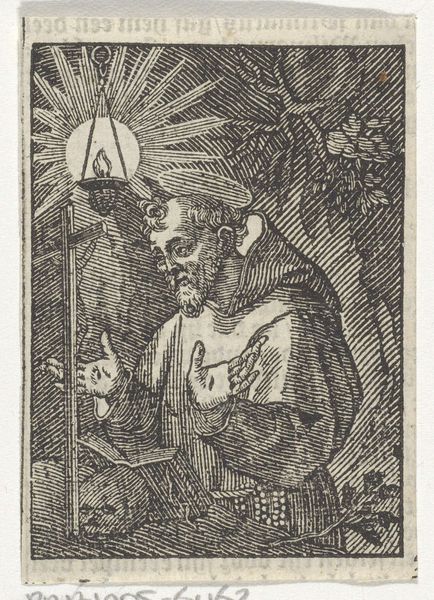
drawing, print
#
drawing
#
quirky sketch
# print
#
pen sketch
#
sketch book
#
personal sketchbook
#
sketchwork
#
pen-ink sketch
#
pen work
#
sketchbook drawing
#
storyboard and sketchbook work
#
sketchbook art
Dimensions: sheet: 2 3/8 x 1 5/8 in. (6.1 x 4.1 cm)
Copyright: Public Domain
Curator: This image before us, held at the Metropolitan Museum of Art, is titled "Saint Peter" and is attributed to Albrecht Durer, created sometime between 1485 and 1528. Editor: My first impression is that of an accessible holy man; not aloof and divine, but constructed via accessible marks and economical means. He is very much "of" the world. Curator: Indeed. As a print, this work was created for wide dissemination, enabling ordinary people to connect with religious figures in a new way. The materiality itself speaks volumes – woodcut prints allowed images to proliferate like never before. Editor: Absolutely, but consider also the role images played within the context of the Reformation. Woodcuts like this could easily become tools within these sociopolitical arguments. Was this accessible presentation intended to challenge certain perceptions of Papal power, do you think? Curator: It is possible. Though not explicitly Protestant, Dürer lived through a period of considerable social and religious upheaval. This particular depiction highlights Peter’s role with accessible religious ideas by linking to key religious symbols: the key representing his status as keeper of the gates of heaven, alongside his traditional attributes. The book probably connects to the key and Peter’s important position as a writer in the new testament and leader in the early church. Editor: But note that by distributing images of holy figures as prints, the mode of production itself challenged notions of sacred space and exclusive creation. Durer wasn't crafting unique devotional items but rather replicable objects intended for a broad, less elite consumption. The background castle creates the context and brings a reality check. Curator: Yes, we witness how artistic methods become a means to convey certain socio-political positions as well as shift power dynamics. The very act of multiplying and distributing the image democratizes faith. It gives the people ownership and it moves artistic creation from just churches and cathedrals into individual spaces. Editor: It underscores how materials and artistic production deeply impact access and reception. We see how the work lives beyond itself as both an artifact and medium within socio-political narratives. Curator: Looking back now, "Saint Peter" provides key insights into the role that artworks may play in expressing or even challenging social and political dynamics. Editor: It reveals art’s enduring connection to both material conditions and shifts in sociopolitical expression.
Comments
No comments
Be the first to comment and join the conversation on the ultimate creative platform.
